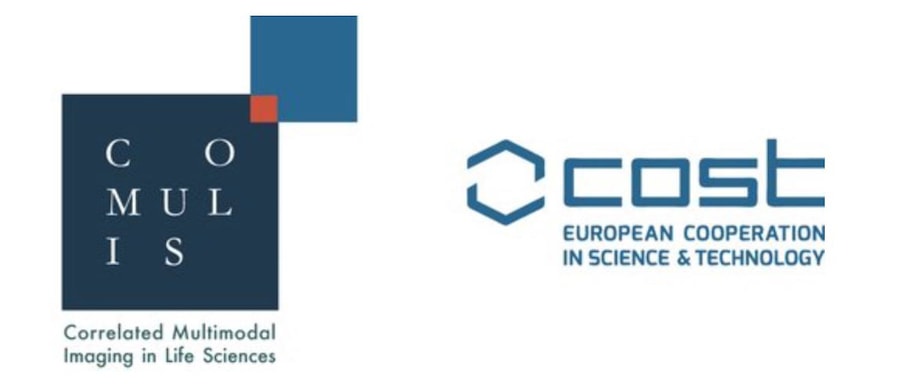Members Login

Channels
Special Offers & Promotions
COMULIS; bringing together the field of Correlative Imaging
EU COST actions aim to connect and foster collaborations between research communities in Europe. COMULIS is one such COST action focusing on “COrrelated MUltimodal imaging in LIfe Sciences” It brings together basic life science and (pre)-clinical imaging scientists to combine different imaging technologies with the goal to generate more informative data.
The action, which is built on a number of Work Groups, does this by organising symposia, smaller targeted meetings, and training schools amongst other things.
The first training school by COMULIS was organised by Work Group 1, Correlative Light Electron Microscopy (CLEM), hosted by Dr. Erin Tranfield at the Instituto Gulbenkian de Ciência in Portugal and a great success (see below). If you are interested in this network please join us.
Paul Verkade, on behalf of COMULIS

Training course report Sanja Despotovic, Institute of histology and embryology, Faculty of Medicine, Belgrade, Serbia:
COMULIS Training School: A practical approach to CLEM
Correlative Light and Electron Microscopy
9-14 Feb 2020, Instituto Gulbenkian de Ciência, Oeiras, Portugal
What I would like to say from the beginning is that this was one of the best-organized courses I have attended.
It started good: with clear and warm-hearted mails from the course host Erin Tranfield. She (through the COMULIS COST action) covered all travel and accommodation options, so arriving on the course venue was really simple and comfortable.
The course covered every aspect of CLEM, from the very beginning: tissue processing for light and electron microscopy, sectioning, imaging, finding right cell/spot in the tissue and data processing. Beautiful examples of research problems solved with CLEM were presented to us. Different CLEM workflows were highlighted: CLEM on MatTek dishes/in the microwave/with contrasting/with gold-enhancement/on-section CLEM. For each of protocols, we got detailed explanation when it is advantages to use it, when it should be avoided and what are the pros and cons. Even more, the lecturers were ready to reshape their talks based on our questions and interest, and to discuss, in really complete and patient way, all possibilities to answer our biological problems. And that is what made this course so special!
When you hear during the lectures "we are here for you", sometimes it is like that, sometimes, not that much- but during this course we had strong feeling that all the great speakers were really there for us! We heard so many useful practical tips- what kind of antibody works in which conditions, which embedding medium to use, how to modify tissue processing, where are the pitfalls in every possible step and how they can be avoided. And that was priceless for us! We had excellent practical demonstrations- we were in small groups, so in each practical step we could actually completely participate. We learned sectioning from the masters in this filed and it did really look as an art! And again, that kind of atmosphere was created, that also during practical seasons we could ask questions about anything related to the topic, and received useful practical advice or even demonstration.
I would like to highlight a few things from this course that should serve as a guide for future courses:
- Exceptional lecturers- who presented well and clearly, but who are an inexhaustible source of useful information and yet pleasant to talk with and accessible to all of us;
- The atmosphere that was created- without any pressure, where you feel free to ask and participate;
- Details- they really took care of everything- from the gluten-free food, teaching us the name for the Portuguese small coffee with a drop of milk (um pingado) so we could order, excellent social event, up to taking care about environment (our great water bottles).
- Stimulation for us (participants) to get involved and reshape the course- we had enough time and were encouraged to ask questions related to our research, or to see again parts of the workflow, we were particularly interested in, and that was amazing!
I will not mention course leaders by name (and they ALL were truly great), but, in the end, I would like to thank Erin Tranfield and Paul Verkade, and, of course, COST, for enabling me to attend this course!
Media Partners



